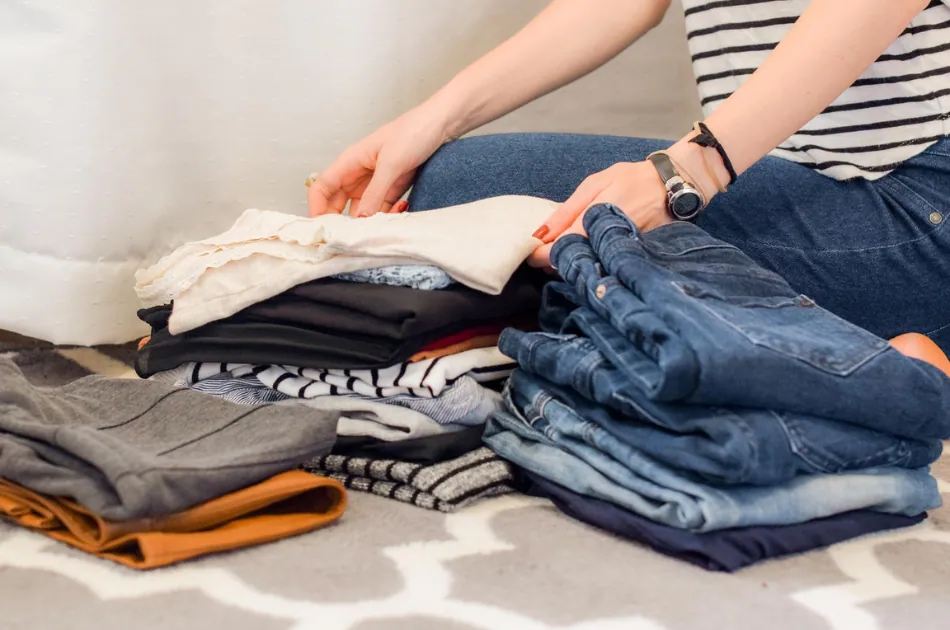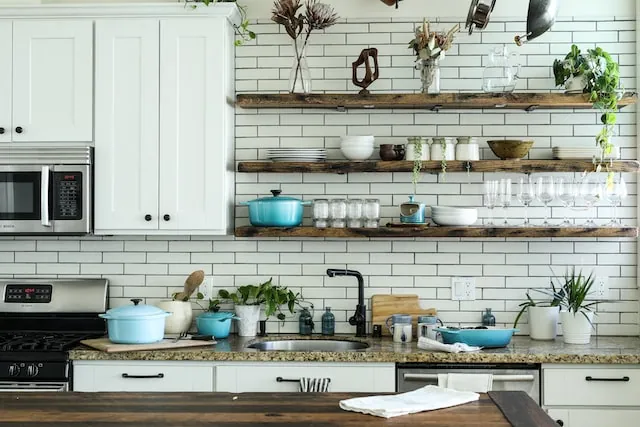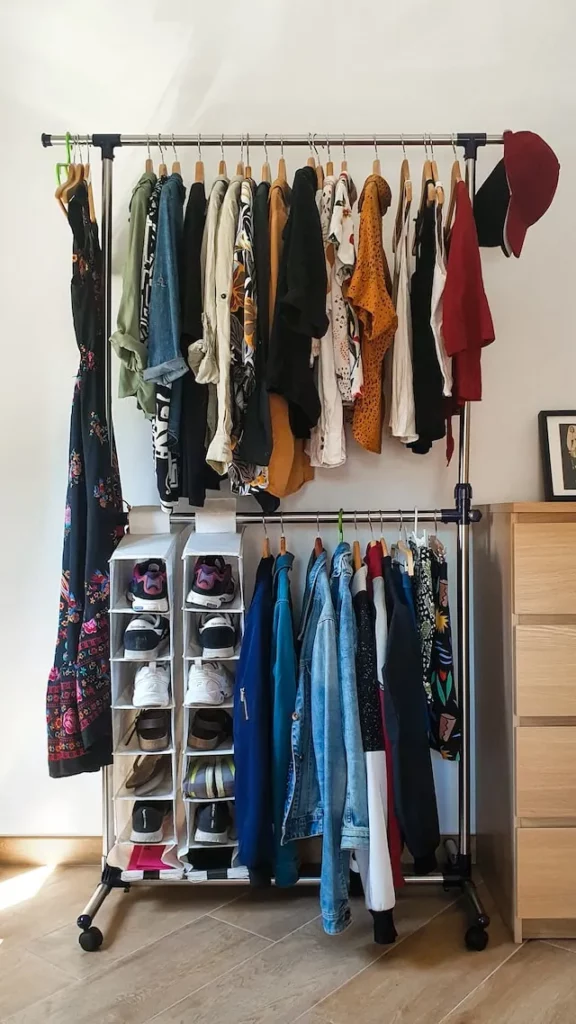We have a habit to collect a lot of possessions throughout our lives, including clothing, furniture, gadgets, and more. But just as our homes become more cluttered, so do our minds. We can become burdened, frustrated, and even depressed by a cluttered environment. The good news is that we can declutter our lives by decluttering our homes.
For many people, the thought of living a simple life with fewer possessions sounds appealing. However, the thought of having fewer possessions often causes them to feel overburdened and restless. Learning how to declutter your home is very important. There are lots of advantages of decluttering.
The Advantages of Decluttering Your Life
The advantages of having fewer possessions are numerous. Even then, taking action is difficult. That is until the many advantages of clearing clutter become apparent:
• fewer messes to clean.
• easier to organize.
• less anxiety
• reduced debt.
• more financial freedom
• more energy to pursue your biggest passions.
The connection between a cluttered home and a cluttered mind
A cluttered home and a cluttered mind are closely linked. Unfinished tasks and unmade decisions can be constantly brought up in a cluttered home, which can make one feel anxious and guilty. This may make it challenging to concentrate and take decisions, resulting in a cluttered mind.
On the other hand, a clutter-free home can encourage calmness, order, and clarity. Your home will feel warmer and inviting when you declutter your home and create more space. Decluttering can also give you a clearer mind so that you can prioritize your duties and make decisions.
Get started to declutter Your Home
When you don’t know where to begin, the decluttering process can feel a little intimidating. So, you can use these techniques:
1. Focusing on one area or room at a time
One simple method to get started is to concentrate on one area at a time. Breaking the task up into smaller, more manageable parts might make it less difficult and less stressful than attempting to take on the entire house at once, which can be overwhelming.
Pick a room or area to focus on initially as your starting point. It might be a space that you use frequently, like the living room or kitchen, or it might have become cluttered and disorganized, like a closet or garage. Once you have decided on a space, it is time to start working.
To begin, gather everything in the room or space and arrange it into piles. To organize your belongings, you can make piles of things you want to keep, give away, sell, or donate. Be tough in your decision-making as you sort through the items. It’s probably time to get rid of anything if you haven’t used it in the past six months and it holds no sentimental value.
Once the objects have been sorted, it is time to begin re-arranging them in the room or space. With an eye toward how you want the room to look and function, begin by storing the items you wish to keep. Try to keep like items together as you store them, and assign particular places for each category. For example, Keep your kitchen tools in one drawer, your books in one bookcase, and your shoes in one closet.
After that, pack up the items you want to sell or donate. Label the boxes clearly so you know what’s inside, and think about deciding on a time frame for when you’ll take the things to a charity or have a garage sale.
Last but not least, appropriately dispose of the items you want to throw away. Make sure to recycle what you can and properly dispose of the rest.
After clearing all the clutter, make sure to keep the space maintained. Set aside a small amount of time each week to keep the area clean and organized. By doing this, you may be confident that your efforts won’t be in vain.
2. Asking yourself questions to determine what to keep and what to let go
Ask yourself the following questions as you move through each room or space when you declutter your home:
i. Does this object hold sentimental value?
An object may have strong emotional worth for you. It might be something that brings to mind a certain person, occasion, or moment. If it does, you might want to keep it in a special place.
ii. Do I love this item or am I merely hesitant to get rid of it out of guilt?
It’s simple to keep things out of guilt, whether you bought them with a lot of money or received them as a gift from someone. Decide whether you are keeping that item out of real affection or out of guilt. The latter indicates that it should probably be let go of.
iii. How often will I use this item?
When considering whether to keep an item, think about how frequently you use it. An object is probably not providing a purpose in your life if you haven’t used it in the past six months and can be disposed of.
iv. Is this item in good condition?
Think about an item’s condition before keeping it. It’s unlikely that you will use something that is broken or in bad condition, therefore it’s usually best to get rid of it.
v. Do I have a specific area for this item?
Make sure to have a place set aside for each category when putting things away. If you don’t have a dedicated space for something, it will probably end up cluttered and messy.
vi. Will I have no trouble finding an identical item in the future?
Think about how easily you can find the item in the future; if you can, there is less of a need to preserve it.
You can decide what to keep and what to let go of more carefully if you ask yourself these questions.
3. The “One in, One out” rule
One easy yet powerful method for organizing and decluttering your home is the “One in, One out” rule. The rule is simple: You must get rid of one existing item for every new item you bring into your home.
The purpose of the rule is to make you think twice before bringing something new into your home. You must analyze whether you actually want something before making a purchase and whether it is worthwhile to part with anything else to make room for it. This can help you make more mindful of the things you bring into your home.
The “One in, One out” rule can be used anywhere in your house, from the kitchen to the closet. For example, you’ll need to get rid of an old shirt if you’re planning to purchase a new one. If you’re planning to purchase a new appliance, you’ll need to dispose of an outdated one that is no longer in use.
Digital clutter can also be reduced using the “One in, One out” method. You must uninstall any apps or digital files that you no longer use or need for every new one that you download.
By being more mindful about what we bring into our homes, we’re more likely to surround ourselves with items that are meaningful to us.
Knowing the sentimental value of items and how to handle them
It is possible that while you sort through your possessions, you’ll come across memories, feelings, and attachments you didn’t expect. It can be easier to get through this process and make it a more enjoyable experience if you are aware of the emotional aspects of decluttering.
i. Letting go of items with sentimental value is one of the biggest emotional challenges faced, when you declutter your home. It can be a piece of jewelry that was handed down from a loved one or a childhood teddy bear. It might be challenging to let go of these things because they can bring up powerful feelings and memories. When dealing with items of this nature, it’s important to remember that the feelings they arouse are more closely related to the experiences and people they represent than to the actual objects themselves. When letting go of the physical object, keeping a photo or a written memory of it can help preserve the memory.
ii. Another emotional challenge of decluttering is dealing with the guilt of getting rid of items that were given to you as gifts or that you spent a lot of money on. It’s important to remember that while these items may not provide much value to your life, they do take up valuable space in your home. Focus on the benefits of decluttering, such as making more space and a more peaceful living environment, rather than feeling guilty about getting rid of them.
iii. Decluttering can sometimes evoke feelings of sadness or loss, particularly if you are working with the possessions of a loved one who has passed away. It is important to take your time and examine these objects with kindness and respect. Some items that hold sentimental value can either be kept or given to other family members or friends.
iv. Finally, organizing your space can make you feel stressed or anxious. It’s crucial to keep in mind to take things one step at a time. Set manageable goals for yourself, and treat yourself when you accomplish them.
The relationship between decluttering and self-care
Decluttering is not only about getting rid of things but also about taking care of ourselves and our mental well-being. Decluttering your home can have a positive impact on your overall well-being, including your self-care routine.
A decluttered home can promote a sense of calm, organization, and peace, which can improve your self-care routine.
One of the main ways that decluttering can improve self-care is by creating a more comfortable and relaxing environment. Your home will feel cozier and inviting when you clear the clutter and make more room, which will enable you to unwind and sleep.
Decluttering might also help you in giving your self-care routine priority. It might be difficult to focus on taking care of yourself when you are surrounded by clutter. Once you declutter your home, you’ll have more time and energy to devote to your self-care routines, such as exercise, meditation, or reading.
Finally, decluttering can also help to reduce stress, which is a vital aspect of self-care.
Conclusion
Decluttering is a continuous process rather than a one-time event. To maintain the cleanliness of our homes and our minds, we must regularly go through this process. Your life will become less cluttered once you have a clutter-free home. You’ll have a more peaceful and harmonious home, leading to a more peaceful and harmonious life. So declutter your home by starting small, and keep going. Give it a try, you’ll be surprised how much better you’ll feel.
Wishing a clutter-free life




